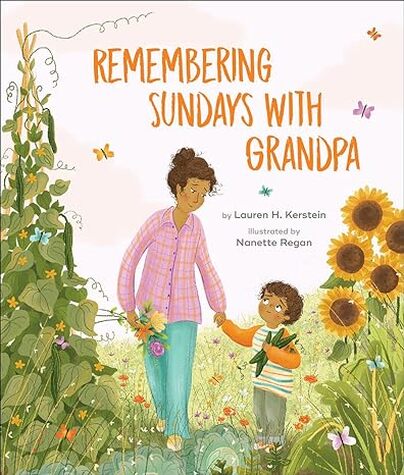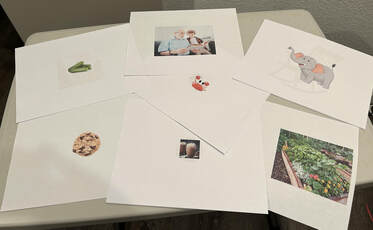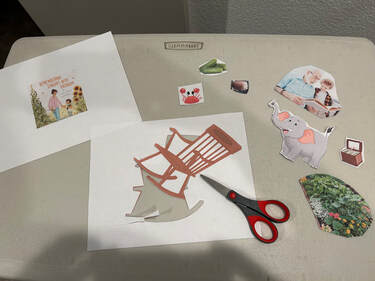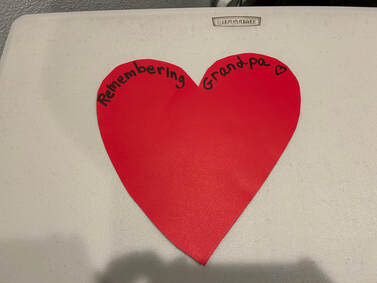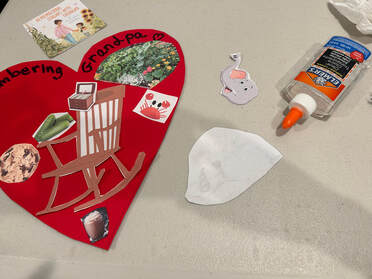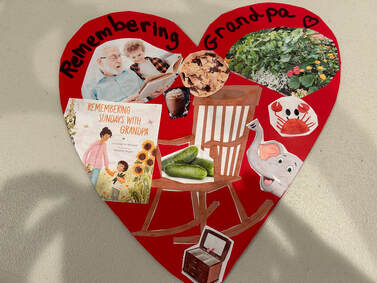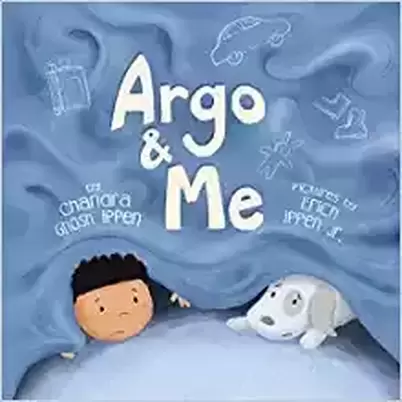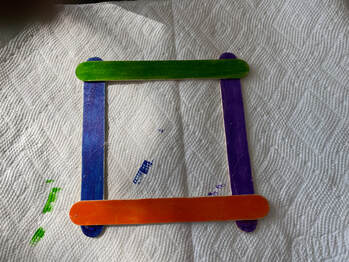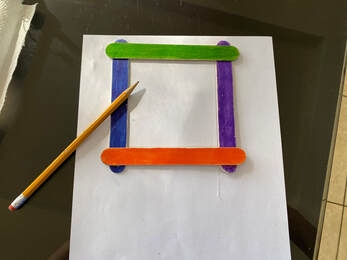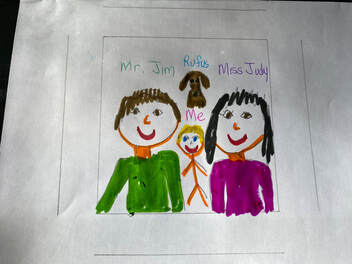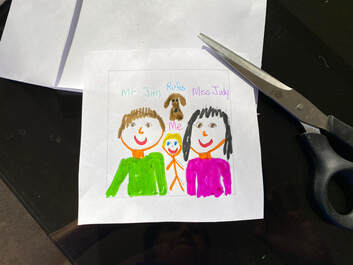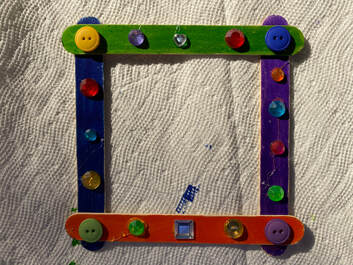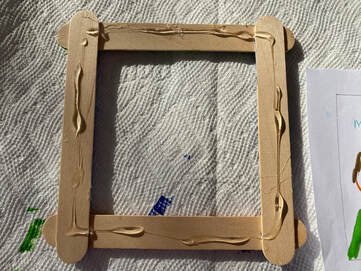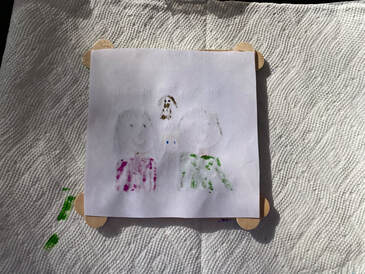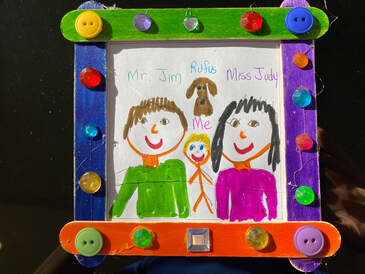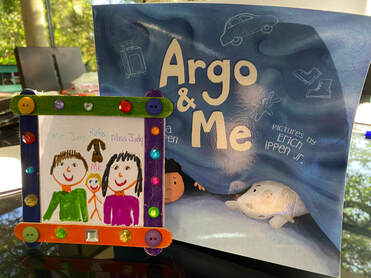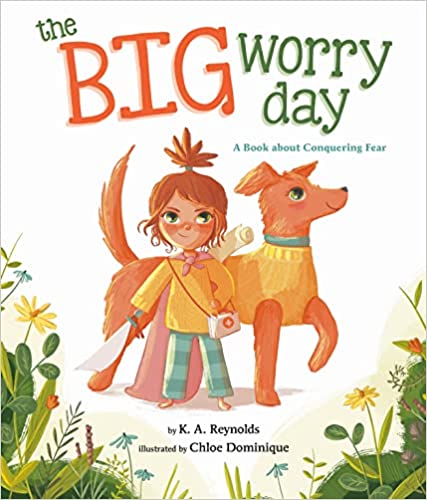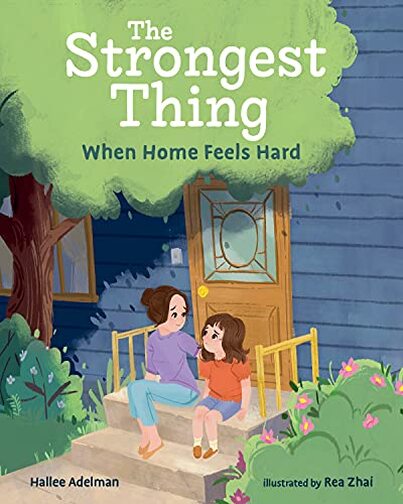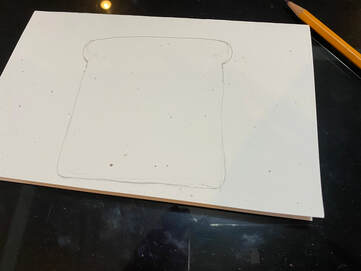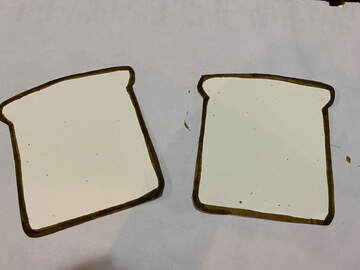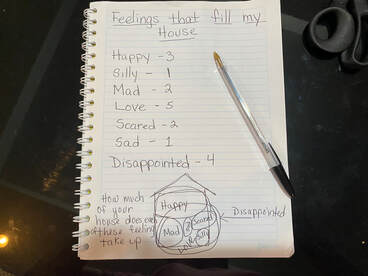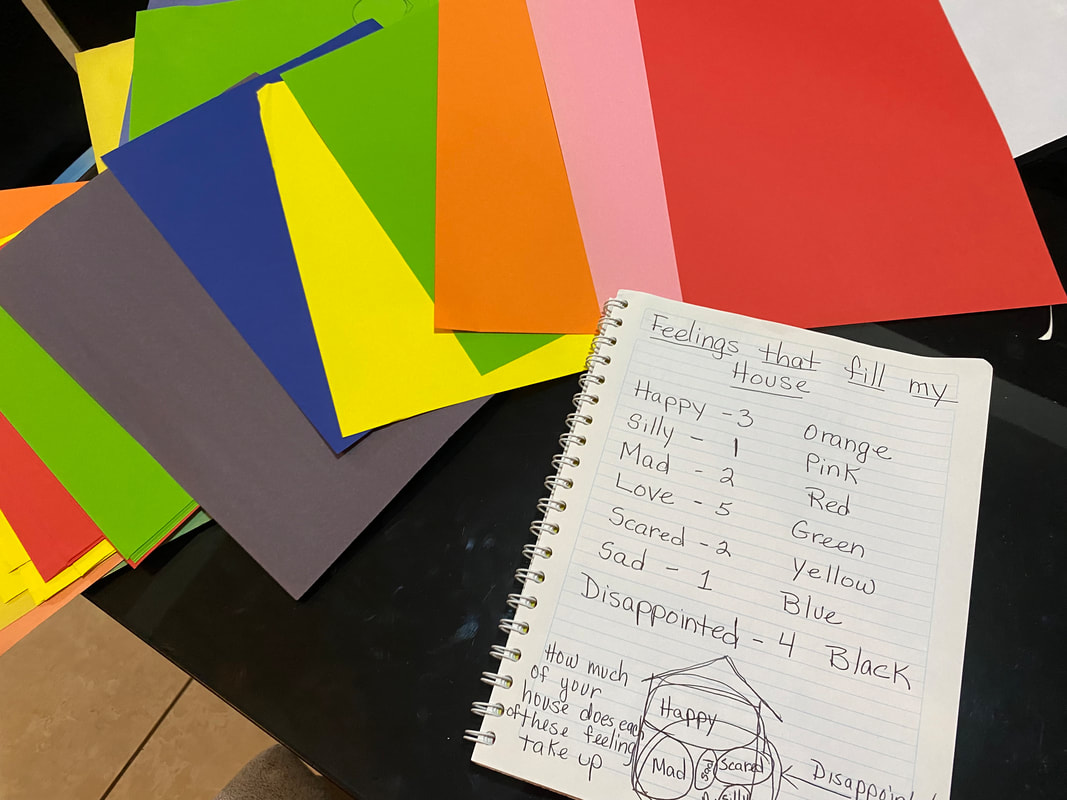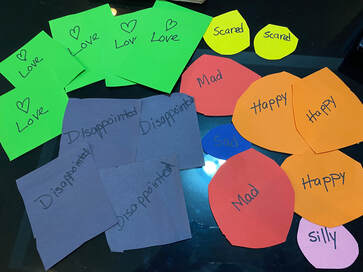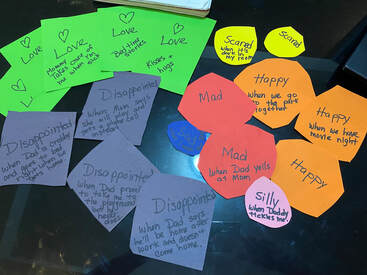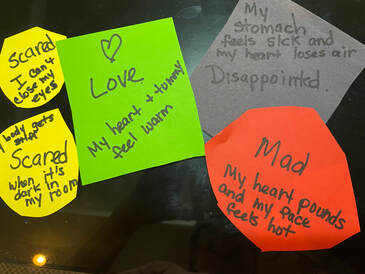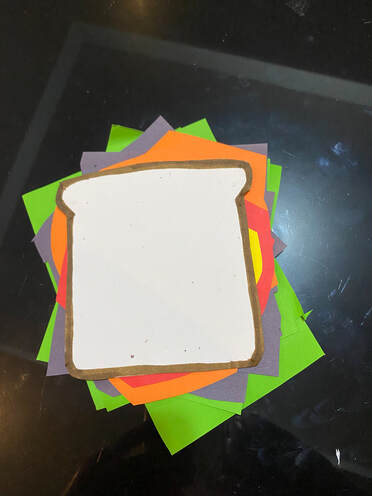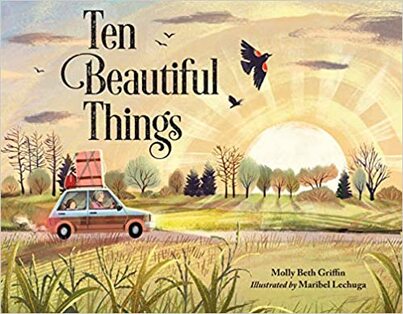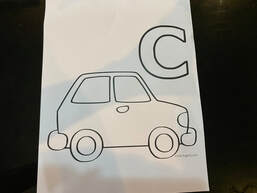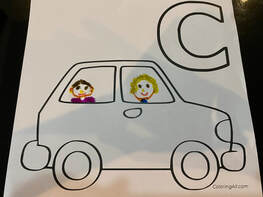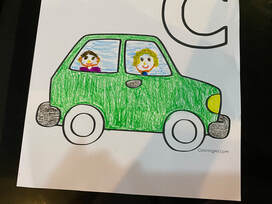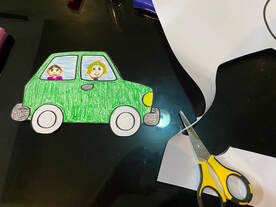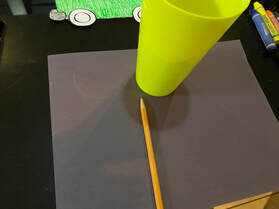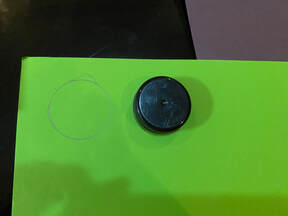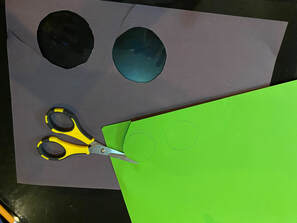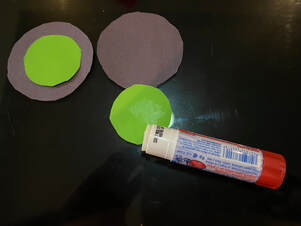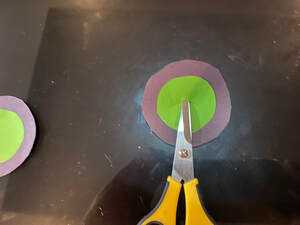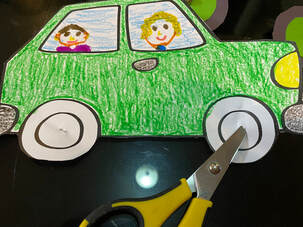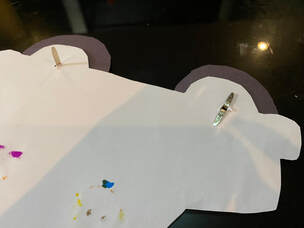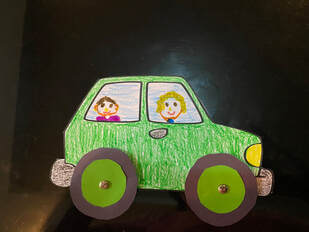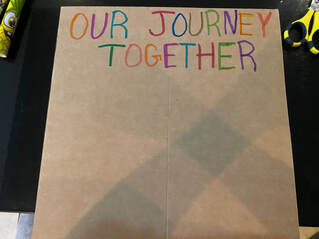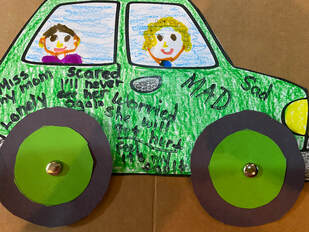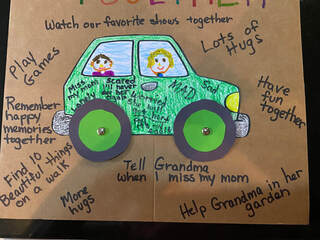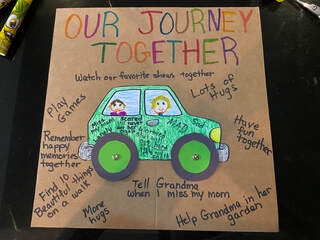|
I have returned from my blog hiatus! I spent the last few months saying goodbye to Costa Rica, where I lived for 5 years, and resettling in Seattle, Washington. I have started a new job in which I am doing Infant Mental Health work with 0- 3 year olds. With this in mind, I may be exploring some board books, in addition to picture books, for an even younger age range of readers. Well, listeners! I'm excited to be back and have an exciting line-up of children's books to review for 2024! The first in line is a new story about coping with the loss of a grandparent by one of my favorite therapist authors - Lauren Kerstein! Let the Children GrieveA Book Review of Remembering Sundays With Grandpa
The first point that is highlighted in this book is encouraging open discussion of the loss and feelings surrounding it. As adults, we want to protect our children from pain. In doing so, we sometimes unwittingly create more long-term pain. Nobody wants to see a sad child. However, there are things in this life that we are unable to protect our children from. One of those things is grief. If we love and build connections with others, which is crucial to healthy existence, eventually we will lose someone we love and are connected with. Unfortunately, sometimes this happens when we are very young. The parent in this story has created an open environment in which the child feels safe talking about hard things. This is demonstrated in the following quote: "Henry dragged himself downstairs to his mom. 'I miss Grandpa,' he said. 'I don't want him to be gone.'" Mom does not make him shove those feelings down by trying to ignore them. She addresses them head-on by saying "I don't either." Rather than trying to fix it, she normalizes it by stating that she also shares that feeling. Henry and his mom then hug and the narrator says, "Sometimes hugs were better than words." Already, by the second spread of this book, we have learned that acknowledgement of feelings and human connection are the recipe for healthy coping. The courage on the part of this parent to allow their child to feel, is also displayed by the photo on his bedside table. This will be a constant reminder of the loss, which is going to feel sad sometimes. However, it's okay to feel sad as our memories of the connection will get us through. That is a message that will lead to healthy grieving. This brings me to the second element that is so important when dealing with a grieving child. Many parents try to hide their own feelings, hoping to avoid stirring up sadness in their child. This often backfires as it leads to the child feeling alone with their pain and does not normalize the often crushing feelings from loss. It is okay for the adult to share their own sad feelings. This helps the child not feel alone with their emotions and promotes the message that We'll get through these tough time TOGETHER. Cry together, remember together, grieve through that connection. That will lead to healthy coping. The third point, and crucial in my opinion, is demonstrated in the following exchange in the book: " 'Why did he have to die?' Henry asked. 'His body was too fragile to stay, but his love will live on forever,' his mom said." Many religions believe in Heaven and life after death and many parents feel that "Grandpa went to Heaven" will cut the pain and be comforting to their children. However, this is too abstract of a concept for children in this age range. Children are in a concrete stage of thinking until about 12 years of age. Therefore, they require a concrete explanation, like "His body was too fragile to stay" or "His body stopped working." This is a much clearer explanation for children within this age group and will not lead to confusion. In my practice, when told their relative has gone to Heaven, I have often heard children say "I want to die too so I can go to Heaven with Grandpa," or "When is he coming back?" Another response I've heard is that of abandonment, "Why did Grandpa choose to go without me?" Again, sometimes our goal of protecting the child from pain unwittingly creates more pain. While highlighting the important elements that lead to healthy grieving in children, Lauren found a way to keep the story light and fun for young children. The book progresses like a Treasure Hunt, with both mom and Henry looking for Grandpa's love all around them. Lauren does this by tapping into sensory memories. For example: Touch/motion: The rocking chair where Grandpa read to Henry, dancing to the jewelry box music Sight/taste/smell: The garden where Grandpa grew his favorite cucumbers Taste: Chocolate chip cookies dunked in hot chocolate Sight: Grandpa's silly faces Hearing: Cucumber hiccups, repeating the silly sounds Grandpa made, ie. trumpeting like an elephant, The senses help us access our memories and emotions. It's a common experience in grieving that you're happily going about your life, and a certain smell, taste, feeling, sight or sound hits you like a ton of bricks and suddenly tears are running down your face. You are caught off guard. What just happened? When thinking about it, you notice that something coming in from your senses lit up a memory and a feeling in your brain and made you react before even realizing it. Many experiences through the senses provoke memories that are comforting and grounding. The feeling is so real that it gives us a sudden message that Yes, we were connected to this person. And that feels good, like a worm cup of hot chocolate. This book not only encourages kids and their parents to engage in healthy grieving, it leaves the young reader with a sense of hope. Grandpa will live on through them through their facial expressions, dimples, beauty marks, and, most importantly, in their hearts. The illustrator, Nanette Regan, captures this hope through the vibrant colors, flowers, plants, butterflies and other living things throughout the book. She doesn't shy away from sad expressions, although shows the joy of remembering and continuing to live through her lively illustrations. If you'd like to read a blog post and see an interview from this author on another one of her great books, check out my blog post from April, 2021. To purchase this book or check out other books by this author, click here. As always, I have included an activity idea to go along with this book. An Activity Idea for Remembering Sundays with Grandpa.Find the Love Let's go on a Treasure Hunt through our memories, creativity and maybe even the Internet to find the love of our cherished person who has died. Materials: -Our treasured memories -Computer -Printer -Photos (optional) -Large cardstock or poster board in loved one's favorite color -Black Marker -Glue
6 Comments
A Book Review of Argo & Me
Chandra Ghosh Ippen, the author, expertly provides emotional distance of these heavy topics by focusing on the experience of caring for a rescue dog. This makes the story more palatable for the young child. She gently weaves the shared experience of the boy into the story, as follows. "People I lived with before had big problems and didn't always take good care of me." The illustrations, in gray, faded colors, show the reader some of the negative experiences of the boy. This brings the reader to not only feel compassion for the dog, but for the boy also. This book serves as an excellent model for compassion and understanding when dealing with a child or a dog, with a history of traumatic experiences. Child and adult readers alike, will feel their heart plunge into deep empathy when reading this book. Ms. Ippen stresses the importance of gentleness, observation, listening skills and taking time and patience to earn the trust of someone with past hurts. "People had not always been kind. Some people had hurt him, and Argo didn't know that we were different." Zeze and Paul, the animal shelter staff, represent kind foster parents of Argo. In dealing with Argo's intense fear, they get down at his level and gently wait while playing soft music. This eventually lures Argo to start to trust and move toward them on his own. What great modeling of empathic caregivers! Argo & Me provides examples of many fears, more common ones like thunderstorms, and unique ones based on personal experiences, like boots, or in the boy's case, suitcases. Suitcases reminded the boy of the sad goodbyes and signified to him another move. But with time and repeated positive experiences, the boy learned that suitcases were for fun trips! This illustrates the hopefulness of being able to change and put some fears to rest when in a positive environment. Later in the story, the boy becomes angry with Argo for chewing on his stuffed animal. Argo reacts with fear and sadness. The family notices that bad moods may remind Argo of bad days in his past. The boy was able to return to Argo later and repair the situation. This scene is significant in two ways. One is the crucial concept that anger does not have to mean loss of love or connection. This is part of learning to feel safe in a secure environment. The second point is that there is meaning behind acting out behavior. Reacting with anger is normal, although taking a deep breath and working on understanding the meaning behind it, is a kinder, more effective way to handle these situations. Another topic that the book addresses that I value deeply, is keeping past positive relationships as much as possible in the lives of these children. The family ran into Zeze and Paul at the dog park. Argo enjoyed sharing memories with his past family in the company of his current family. Setting up these visits can help the child feel whole by combining parts of their past lives with the present. It can also model positive loss, as shown in the following quote: "Even when they're not with us, they live in our hearts." If you pay close attention, you can surmise that the boy was adopted by a single dad. This is a great message of the possibilities of finding love in non-traditional families. The framed photos on the last spread of the book, displaying the boy's new life with past connections, ends the story on a beautiful note. This leaves the reader with feelings of hopefulness that, even if you had a rough start on life, you can find love and connection in your future. The illustrations, by Erich Ippin Jr., reflect the messages and moods of the story. The soft shades of blue add to the feelings of gentleness and compassion. The sad moments are colored in gray and dull hues, while the happy moments are reflected in bright shades. The illustrations are fun and will appeal to young children. To purchase this book or check out other books from this author, click HERE. An Activity Idea for Argo & MeMaterials: -Large Craft Sticks -Strong glue -white paper or cardstock -Markers -Pencil -Decorating options (jewels, glitter glue, buttons, small stickers, etc.)
A Book Review of The Big Worry DayThis month I teamed up with A Novel Mind website and created a guest post for their blog! It features the amazing book, The Big Worry Day, written by K.A. Reynolds and illustrated by Chloe Dominique. This book presents an insightful and authentic representation of childhood anxiety and is chockfull of coping strategies! As always, I have included an activity to go along with the book. Check it out HERE!
A Book Review of The Strongest Thing
The book features a young girl, Sera, who finds her home a hard place to be due to her Dad's problems with anger control. He raises his voice and blames his family for things in which they have no control. At the height of his anger, he leaves the house and slams the door so hard, that the glass breaks. This is scary for Sera and creates anxiety as she anticipates what will happen when he returns. Sera thinks of her dad as "the strongest thing," because his anger seems so big, it fills up the house. So big, in fact, that, "...my house looked too small for me to fit back inside it." However, in contrast when approaching her school, Sera describes it as, " ...a shining castle on the hill, big and bright and cheery." The contrast in her description between her house and her school, shows us that Sera experiences her school as a haven. The familiar people and routines are comforting to her, and elevate her mood. The school day distracts her from thinking about the scary things at home. However, when the teacher announces that the school day is half over, Sera's mood takes a nose dive. She becomes angry and those sensations in her body, that she experienced during the incident with her father, return. "My shoulders sank like a ship, and my belly squirmed with worry." Ms. Adelman not only focuses on Sera's feelings, but the specifics of how that feeling affects her body. These sensations are described using similes which provides a clear mental picture for the reader to fully understand what Sera is experiencing. In order to name and recognize our feelings, we need to develop the skill of tuning into our bodies. This allows us to recognize those feelings through the sensations we're experiencing. After stomping around with her anger, Sera seemed to be calming herself by painting. A classmate then accidentally slams the door and startles her. It reminds her of the door slam and broken glass at home. When this happens, her painting gets ruined and she begins to act "like the bully at home," -blaming, yelling, pointing, seething. Her feelings were so big, that she felt like "the strongest thing." After observing her classmate's emotional reaction to her behavior, she knew exactly how he felt. At that point, Sera realizes that BIG ANGER was NOT the strongest thing. She then apologized, wishing her Dad would do the same for her. After the incident, she feared the worst from the teacher. However, he responded with kindness and support, which is an excellent model for teachers reading this book. His reaction also served as a model for the students, as they then offered support too. Due to the other's reactions, Sera learned that "the strongest thing" is actually being calm and kind. The last page of the book leaves the reader with a powerful message. The teacher and the mother are together in the classroom offering support to Sera. The teacher approached this situation as a team player with the parent. He did NOT call or send a note home about Sera's poor behavior. He solicited the parent to come in and assist him in supporting Sera. Care and compassion in place of punishment. Beautiful. A great message for teachers, parents and kids. There are so many important mental health messages portrayed in this book. However, I'm going to zoom in on the importance of emotional regulation in children AND adults. Adults who cannot regulate their feelings, especially their anger, create cycles of trauma in families. One of the most important things to begin learning as a child and throughout one's life is to regulate your emotions. If this skill is not mastered by adulthood, it will negatively affect a person's relationships, family, jobs, and overall happiness. Then, without the proper modeling and teaching, the cycle continues with their children. This is the reason why it is crucial to teach our kids about the different emotions, how they feel in their bodies, what makes them feel that way, and what coping skills work for them. Kids need to be allowed to express their feelings openly when younger, so when they are adults, they will have had much experience at managing them. By doing this, the trauma will not pass on to another generation. Both men and women can have problems with emotional regulation, however, anger control issues are more prevalent in boys and men. The reason for this is that traditionally, anger has been the only emotion that boys have been allowed to express. It is the emotion that is considered more "manly." Even now in 2022, some boys are still getting the message, "big boys don't cry," or "you're acting like a girl," when expressing any emotion besides anger. By keeping all of the feelings besides anger inside - sadness, hurt, disappointment, fear, etc.- those feelings get wrapped up in one big package called ANGER and that anger grows exponentially inside them. For this reason, we need to teach our boys about ALL OF THE FEELINGS. and ALLOW, AND EVEN ENCOURAGE THEM, TO EXPRESS THEM OPENLY. By doing this, they can practice coping and regulating, so by the time they are adults, they will be experienced emotional regulators. Then, and only then, will they grow up to be men who don't continue the cycle of anger and perpetuate trauma in their families. Instead, they will act as models for their children for dealing with emotions appropriately. That is the cycle we want to perpetuate. If, as a society, we understand that expressing and understanding all of the feelings makes us stronger, not weaker, the more homes like Seras' will have plenty of room for love and happiness. If you wish to purchase this book, or check out the many other mental health books written by this author, visit Hallee Adelman's website HERE. An Activity Idea for The Strongest Thing MY HOUSE IS LIKE A SANDWICH Sera describes her house "like the middle of an old sandwich, squished and dark and icky." For this month's activity, we're going to use this simile, make a sandwich and have the child fill it with the feelings in their house. NOW, LET'S BUILD OUR OWN SANDWICH! Materials: -White or beige cardstock or construction paper -Construction paper in many colors -pencil -scissors -brown and black markers
A Book Review of Ten Beautiful Things
Grandparents raising grandchildren is not a new concept. Grandparents have been standing in for parents for centuries. However, the number of grandfamilies has doubled since 1970. An estimated 2.7 million grandparents in the United States are raising their grandchildren. There are many factors that create a situation where the parents are absent. These include alcohol or drug addiction, incarceration, death, mental illness, abuse and/or neglect, teen pregnancy, developmental disability or military deployment. The most common of these factors is addiction, which can lead to many of the other factors above. The opioid epidemic has certainly increased these numbers in recent years. One thing that all of these families have in common is grief and loss. The child is dealing with grief related to the loss of their parent and the grandparents are dealing with grief related to their child. The feelings are often intense on both sides of this relationship. This situation presents a host of other big emotions for the child and the grandparent. Especially challenging for the grandparents is that they have to witness and address the day to day pain of the child(ren), while at the same time dealing with their own feelings. Sadness, anger, worry and uncertainty, are common on both ends. However, there are many challenges specific to the grandparents. This is not what grandparents expected to do with their lives at this stage. The plans they may have had are often upended with this huge responsibility, which is another source of grief. Grandparents lose their "grandparent role" of being in the position to provide treats and fun excursions, when instead they are responsible for discipline, education, and constant caretaking. Due to the resistance in switching roles, as well as pitying the child for the pain they have endured, many grandparents stuggle to provide appropriate discipline. Guilt for possibly being the cause of their own children's problems can also be a factor. The kids are not happy with the change in the grandparent's role either. Therefore, they often push back on the discipline and yearn for their prior relationship with their grandparent. Due to their age, grandparents often have lower energy levels, health issues and limited retirement income. They may have to navigate child welfare systems, educational systems and legal issues. Grandparents often experience loneliness and isolation as their peers are no longer interested in activities with children. And, they don't fit in with other parents who are much younger than themselves. Resources are available for grandfamilies, however, they are difficult to navigate. Often they have to jump through many hoops to access minimal resources. All of this being said though, grandfamilies are a gift. It usually is the best option for a child who can no longer live with their parents. It can keep the child out of foster care, and with family whom they already have a relationship. Grandparents provide much stability, consistency and unconditional love which is what children need most when in this situation. Also, despite the heartaches, children provide grandparents with much joy. In its own subtle way, Ten Beautiful Things, captures much of the joy and heartache I have mentioned above. Gram and Lily embark on an adventure of the unknown. They are headed on a long drive to Gram's house, which is going to be Lily's new home. The reason for this move is not stated, however, the tone of the story shows the reader that this move is riddled with big feelings. They drive off in the dark with her things piled high on the car. To me, this represents the permanency of the move, along with the emotional baggage that she is taking with her. Leaving in the dark implies the urgency in which they had to leave and possibly the fear attached to it. Gram tries to distract Lily from the pain by encouraging her to find ten beautiful things on their route. Lily doubted that she could find anything beautiful, which points to the hopelessness in the beginning of the story. However, looking for ten beautiful things was brilliant, as grandparents often are. It served as a Mindfulness activity. Mindfulness is a meditation exercise in which one focuses on being intensely aware of what is in their surroundings in the moment, whether it be sights, smells, sounds, tastes or touch. It can help calm emotions and regulate the body. This activity was an excellent coping strategy for both of them to address their sadness, grief, and fear of the unknown. The author, Molly Beth Griffin, did a great job with descriptions to help the reader identify with, understand and experience what Lily was feeling. Sadness was evident throughout the story and much emptiness was described with Lily trying to fill the "hollow spaces" inside of her. The following passage describes a mix of intense feelings that you can't really put your finger on, but ones in which all of us can certainly relate. "Lily felt the complaints starting in her belly again, coming up her throat and nearly out of her mouth." The story culminated in a storm which reflected the current state of Lily and Gram's lives. However, Lily felt much comfort and safety inside the car with Gram, even if their lives outside of that relationship were stormy. Gram was nurturing and thoughtful and not minimizing of Lily's feelings. In the hug, you could feel their mutual pain, as well as their love. This line towards the end of the story told us all we need to know about their lives ahead. "None of this was easy, Maybe it would never be easy. But she belonged with Gram now. She belonged here now." This was an acknowledgement that their situation was not easy and there was no easy fix. However, Lily and Gram had each other and they were going to figure out how to move forward together. This was a realistic and hopeful tone in which to leave the reader. The illustrator, Maribel Lechuga, expresses the mood of the story well, through color variations and facial expressions, Beautiful, detailed landscapes throughout the book take the reader on a mindfulness journey, along with Lily and Gram. I highly recommend this book to be read by grandchildren, along with their caregiving grandparents. It is also relevant to those in kinship care, with another relative. Many will relate to the joy, pain and uncertainty in this situation. I have provided an activity below to further explore this topic. To purchase this book or check out other books by this author, click HERE. An activity idea for Ten Beautiful ThingsOUR JOURNEY TOGETHER This activity can help grandparent and granchild connect on feelings they have in common. It will help them better understand each other and feel that they are not alone with their feelingsl. Materials: -Car coloring page www.coloringall.com/coloring-pages/letter-c/simple-car-and-uppercase-c/ -pencil -Crayons and/or markers -Black construction paper; other colors -Larger piece of cardboard or cardstock -scissors -glue -2 paper fasteners
|
Follow me on Twitter, Pinterest and LinkedIn
Categories
All
|
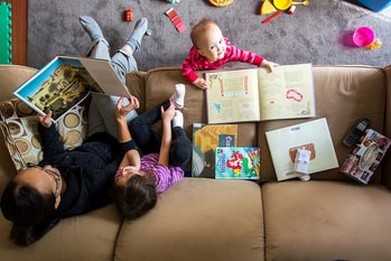
 RSS Feed
RSS Feed
